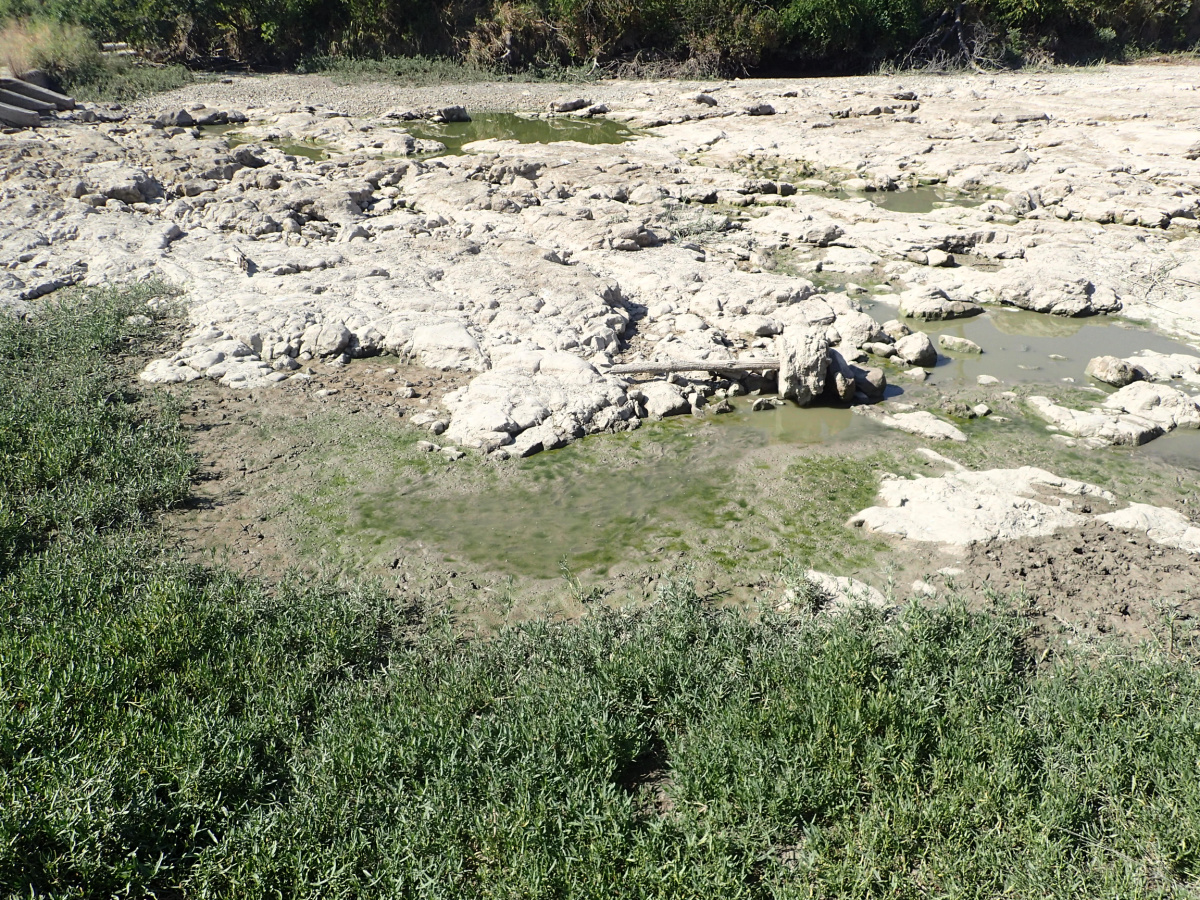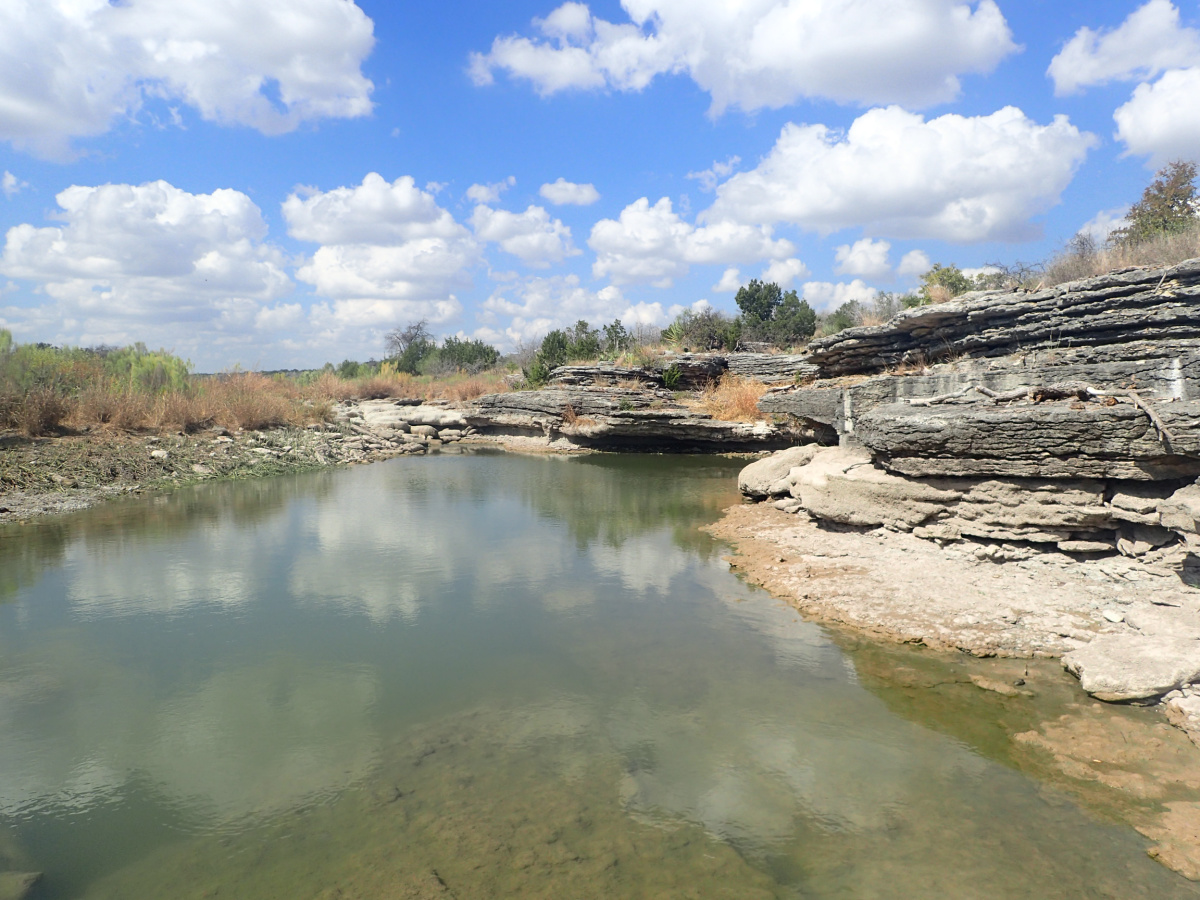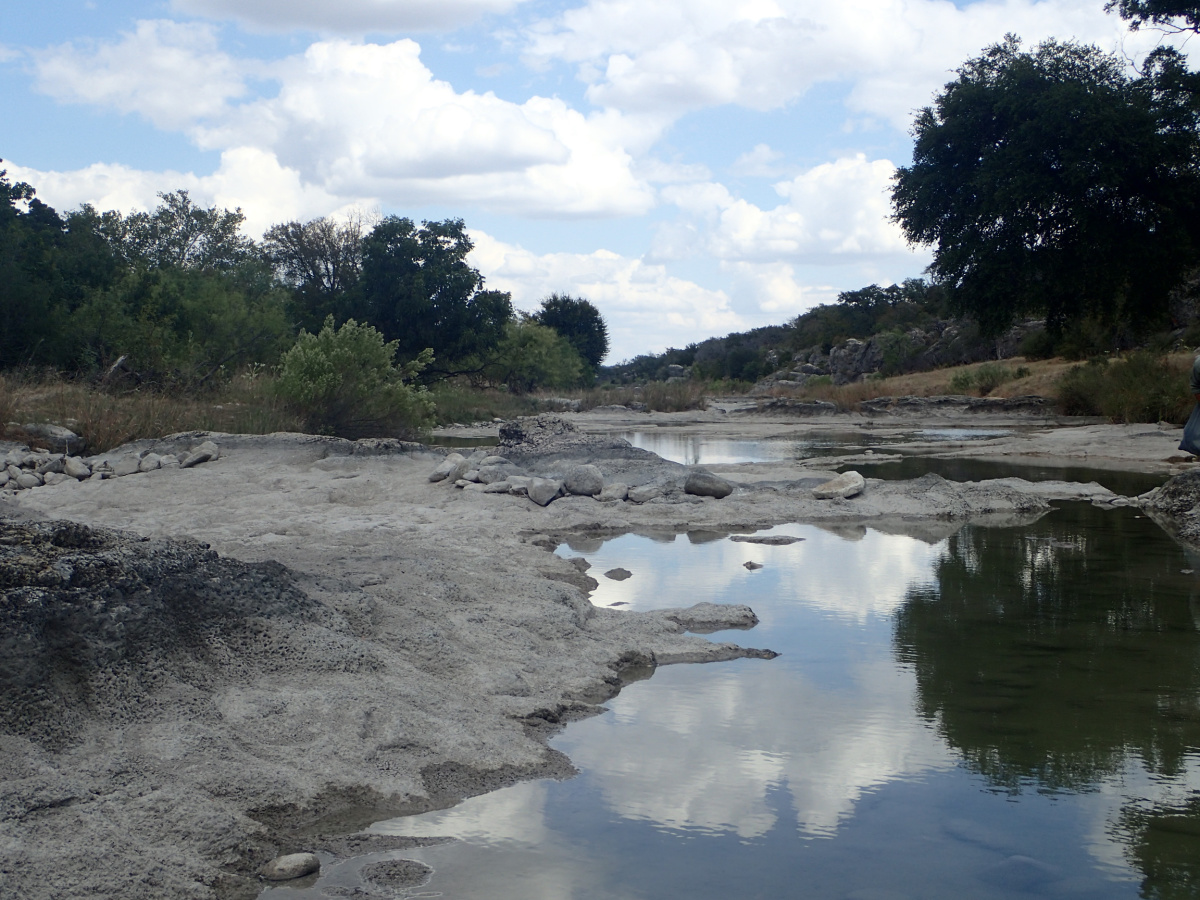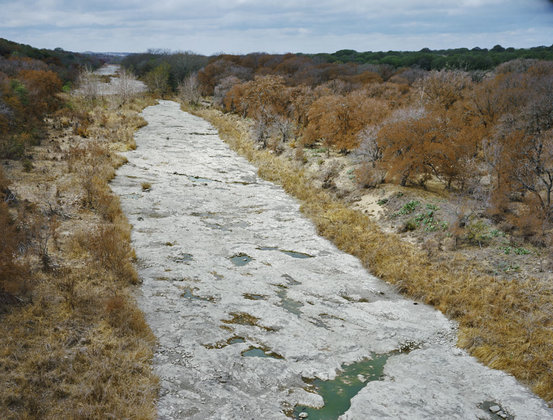The following is a summary of threats to the San Saba River. Please click on the links that follow to read further details about each of these threats.
In 2013, American Rivers selected the San Saba River as the third most endangered river in the United States stating: “Through wasteful water use and unregulated pumping, irrigators are transforming a vibrant, pristine river into a dried-up riverbed.” American Rivers also said “…given the State’s ineffective and underfunded enforcement program, the San Saba River has no protection.” American Rivers, with headquarters in Washington D.C. and 300,000 supporters, has protected rivers and restored damaged rivers since 1973.
The historical problems with water flow in the San Saba River are the result of excessive diversion by the Menard Irrigation Company (MIC) Canal and over 100 alluvial wells in and around Menard, along with often weak natural spring flow. From 1994 to 2014, the MIC Canal exceeded its maximum permitted diversion from the San Saba River, committed numerous violations of its water rights permits and failed to maintain the Canal. The Canal was closed in 2014, but local officials are trying to repair and reopen the Canal, the operation of which is a major threat to continuous flow of the San Saba River.
An alluvial well is a shallow well next to a river that takes surface water (i.e., state-owned water) contained within the alluvial sediments in the river (called “underflow”) rather than groundwater from the underground aquifer. State records show there are over 100 alluvial wells near the San Saba River in and around Menard and most of these wells are unpermitted and illegal and none are known to have continuous flow metering devices for measurement of diverted water. These alluvial wells are the cause of dramatic losses of water flow in the San Saba River downstream of Menard. The alluvial wells are the biggest threat today to the San Saba River.
The Texas Commission on Environmental Quality (TCEQ) is responsible for regulating surface water rights and availability. After numerous complaints from FOSS members and other landowners, TCEQ investigated and sanctioned the MIC Canal (resulting in its 2014 closure) and issued violation notices to several property owners who took surface water from the San Saba River with unpermitted alluvial wells. For example, one violator was illegally diverting water from the San Saba River so they could keep sufficient water in their private pond for their fish while the San Saba River went dry.
State law provides that riparian landowners’ domestic and livestock water rights (D&L users) are superior and have priority over all permitted water rights holders. D&L users can submit a priority call to the TCEQ when their section of the river has insufficient flow to satisfy their domestic or livestock needs. In 2011 and 2013, TCEQ investigated priority calls made by FOSS members and suspended pumping on the San Saba River by permitted water rights holders. San Saba River flow resumed after the TCEQ suspensions. TCEQ denied priority calls by D&L users in 2015 even though the San Saba River flow conditions were worse than conditions in 2013.
TCEQ has four watermaster programs covering 10 of Texas’ 23 river basins, including the Concho River in the Colorado River Basin. Watermasters allocate water between users and ensure compliance with water rights. TCEQ evaluates river basins for possible watermaster programs at least once every five years. The San Saba River was evaluated as part of the Colorado River Basin watermaster evaluation in 2017 and 2012. FOSS members actively participated in both evaluations. TCEQ’s position is that D&L users cannot petition for a watermaster and threats to D&L users superior water rights cannot be considered in the watermaster evaluation criteria. TCEQ did not create a watermaster for the San Saba River after Menard irrigators objected.
The San Saba River is home to certain freshwater mussel species that have been in decline due to the impairment of water quality and quantity. Freshwater mussels (often referred to as “the livers of the rivers”) are little water treatment plants in rivers because they clean the aquatic ecosystem by filtering impurities from the water. The U.S. Fish and Wildlife Service (USFWS) has been evaluating these freshwater mussels since 2011. On August 24, 2021, the USFWS issued a proposed federal rule to protect six central Texas mussels under the Endangered Species Act, including four species that are currently present or found to have been present in the San Saba River.
Friends of the San Saba (FOSS) recommends that TCEQ and the Texas Legislature take the following actions to protect the San Saba River from these threats:
- All alluvial wells should be associated with an existing water right permit and have a continuous flow metering device for measurement of diverted water.
- Establish and maintain minimal river flow levels and suspend junior permitted water rights holders when river flow drops below the minimal level. For example, establish a TCEQ rule for minimum San Saba River flow of eight cubic feet per second (cfs) at the Brady, Texas gauge, and if San Saba River flow drops below eight cfs, then TCEQ would suspend junior permitted water rights holders until the San Saba River’s flow is restored.
- Create a watermaster for the Colorado River Basin or add the Upper San Saba River (Schleicher, Menard, Mason and McCulloch Counties) to the Concho River watermaster program.
- Consider threats to D&L users with superior water rights in watermaster evaluations and allow D&L users to petition TCEQ for a watermaster.
As the Texas population continues to grow rapidly, action must be taken by TCEQ and the Texas Legislature so Texas’ Rivers continue to flow today and for future generations.






